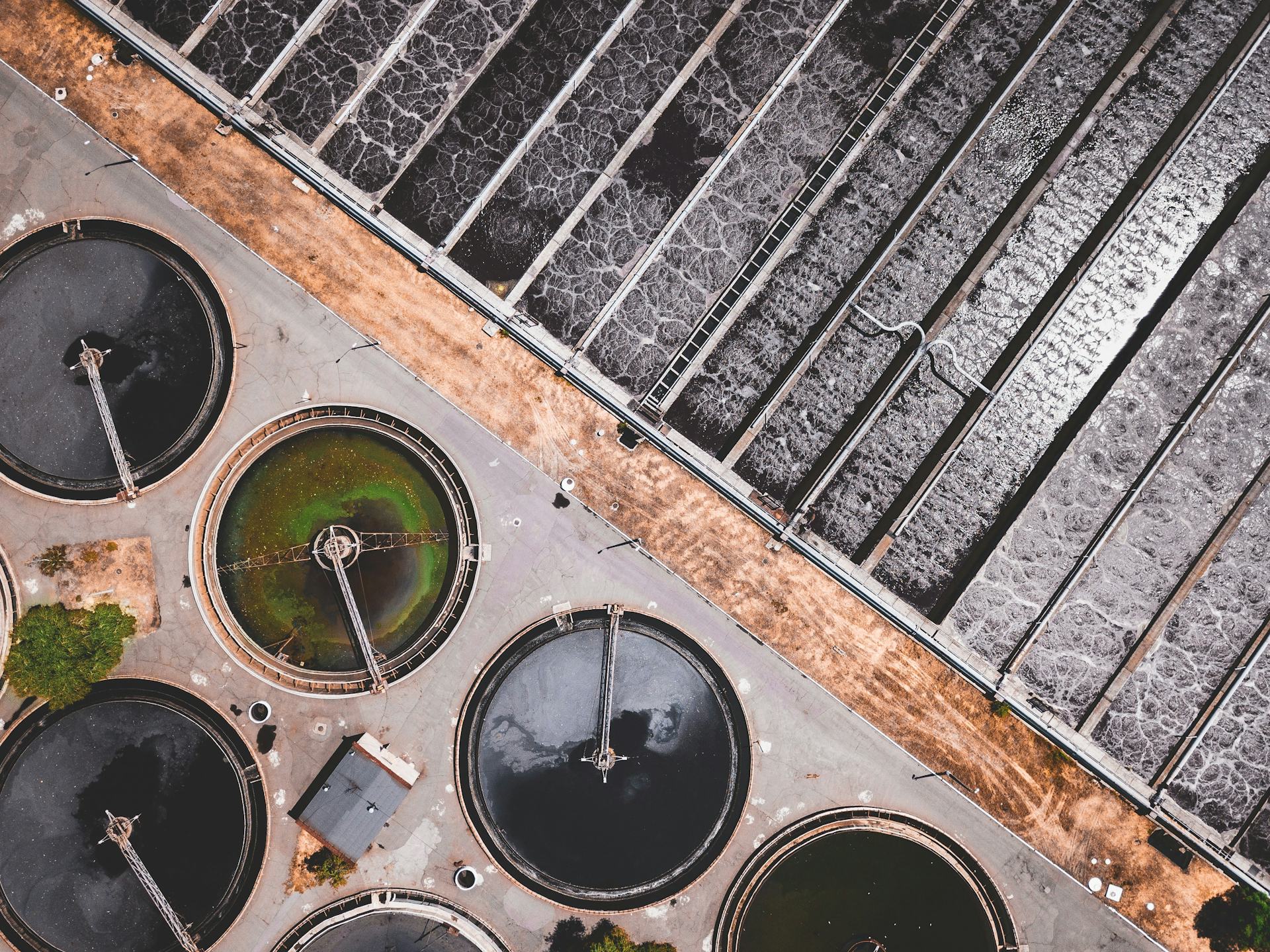Demand for materials and resources is growing dramatically, driving emissions and environmental impact in line with global population increases. Fortunately, the circular economy can help to address these issues and turn back the tide on climate change by challenging the ‘take-make-dispose’ world we live in. But, while the application of circular economy principles to material extraction, energy, design and products is front and centre of the conversation, the importance of circularity in terms of the single most valuable resource to humanity’s needs, water, is often overlooked.
Humanity is facing a water crisis
Water stress and scarcity are on the rise around the world, with a number of urban areas in particular running out of water. With projections of seven billion people residing in cities within the next three decades, urban water demands are expected to skyrocket. According to a recent research report published in the Proceedings of the National Academy of Sciences, around one million urban dwellers will be experiencing water shortages by 2050.
A significant contributor to water scarcity in cities is our linear approach to water management systems. Water infrastructure is designed primarily to collect rainwater and runoff though these are not the only options. Bore wells and the use of desalination are common in non-urban areas where rainfall is limited. Once collected, water is stored temporarily, is consumed by a range of consumers and then disposed of through either formal or informal drainage systems, often into our waterways.
In many urban cases, water is treated before it enters waterways, while in non-urban areas, even those on the urban fringe, water is left untreated and either entering waterways or left to evaporate in open land areas. Untreated water can result in contamination and if directed to waterways, can cause problematic impacts on marine ecosystems. Fresh water is a finite resource and such a linear approach to its management is not sustainable for its long-term supply.

People travelling a distance to collect water in areas struck with water shortages (Image source: Unsplash)
Water's potential in the circular economy
Water is a critical input into every sector of modern economies – be it in agriculture, infrastructure, manufacturing, textiles, the built environment or urban planning. In terms of how it should be viewed within a circular economy, water is unique; it is a resource, product and service in itself. Despite the importance of water within the economy in these ways, the traditional scope of water management has focused on sanitation, delivery of water, stormwater and storage services, water treatment and waterways protection; rather than creating a circular and holistic system that encompasses these issues as well as its ongoing sustainability and role in industry.
Given the vital contribution of water across every industry, an absence of circular principles within water systems limits and reduces the value of this precious resource. A circular approach to water management needs to go beyond a traditional view of stormwater management and sanitation and aim to close the loop in water cycles by reusing, recycling and exchanging the resource across sectors and minimising both waste from activities requiring water and the waste of water itself.
Reuse of water within the economy can move beyond simply returning water to the natural environment – the natural water cycle is more than sufficient to do this. Instead, by focusing on creating processes that ensure the water extracted from the environment can be consumed multiple times for human activities, greater value retention can be achieved. In addition to being good from an environmental aspect in reducing the need for further water extraction, this also has many economic benefits.
Globally, it is estimated that only about four per cent of water is reused. This represents an exciting market opportunity to tap into. Water emulates one of the best cases of circularity in nature. The hydrological cycle represents the circle of life. Why has there been such a dissociation of the cycle’s circular manner in nature from its contribution to human activities?
Building a circular economy for water
In global efforts to become more circular, an integrated approach to water management across current economic systems is critical. Utility managers, stormwater systems, dam management and traditional water works must form more collaborative relationships with industry, with this network working in tandem to ensure circular principles for water management are applied across all sectors.
Another clear but vital requirement is that organisations placed at any stage within the natural water cycle, be it supply, downstream use, treatment and sanitation or distribution, must ensure the treatment, reuse and preservation of water that is of usable quality. We cannot go on with business as usual or water scarcity will only become more precarious. The World Economic Forum is already predicting a 75-95% chance of water wars within the next 50 to 100 years, a scenario we all want to avoid if possible.
As outlined in a research report by ING, various circular economy approaches can be implemented to achieve water efficiency and reduce water shortages such as:
Reducing the demand for fresh water across industries, such as in agriculture or construction, by improving water efficiency in crop patterns, shifting to more water-efficient equipment used in industry, growing more water-efficient crops or using saline water in cases where crops can withstand salination.
Retaining water through natural as well as human-made infrastructure. Natural infrastructure includes wetlands and forestry projects. Whereas, human-made processes include rainwater harvesting, underground aquifer storage, aboveground water reservoirs, increasing the water retention capacity of soil to make agriculture less dependent on fresh water and more equipped with existing groundwater. Infrastructure is also needed to prevent any leakages in industrial processes so that there is no indirect loss of water.
Reducing water pollution by developing industrial processes that do not contaminate water where possible, separating the contaminated water from clean water and preventing any accidental discharge of untreated water into our waterways.
Reusing water wherever possible – whether it be by reusing fit-to-use water directly or by reusing grey water (non-potable water) in processes that are not affected by its quality (like in irrigation).
Recycling and treating municipal wastewater, also known as reclaimed water, to be used for irrigation, drinking or industrial use. A notable example of this can be seen in Singapore, where reclaimed water satisfies over 40% of the country’s drinking water demands through a reclaimed water brand called NEWater.

Wastewater treatment plant (Image source: Unsplash)
While achieving water circularity is the goal, the implementation of solutions like the above does come with many challenges and barriers.
A resource that is seen as so crucial to the health of a city where residents have always had regular easy access to it makes it difficult to regulate or legislate water management in many parts of the world. This often leads to overexploitation, whether knowingly or unknowingly
The water challenge is also very contextual and varies across different regions. For example, some regions like Ghana are experiencing technological challenges to developing appropriate infrastructure, whereas areas such as the Netherlands see behaviour change as their most significant barrier to using water resources more sparingly. Unfortunately, there is no one-size-fits-all solution.
What is clear is the need to look at water management as a critical component of our circular transition, not only through an environmental lens but an economic one too. Shifting away from our linear water system will require persistent and transformative change and must be addressed at every stage of its supply chain.
Water is the lifeblood of our planet and its systems. Let us keep it flowing for generations to come.
Learn more about water circularity at https://www.globalcircularwater.org/